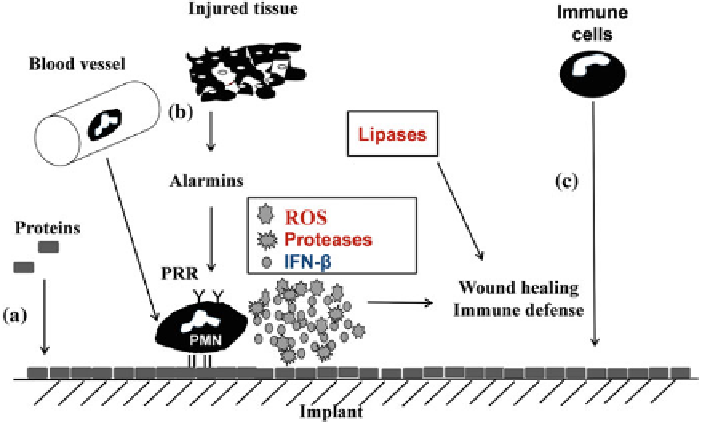Biomedical Engineering Reference
In-Depth Information
Fig. 1
Implant-associated inflammation. Soon after implantation a protein layer is adsorbed on the
implant surface (
a
) Recruitment of PMNs to the site of injury starts following injury and protein
adsorption (
b
) Macrophages and monocytes are recruited at later stages (
c
)
imaging approaches was compared for the reliable evaluation and ranking of the
biocompatibility of various implant materials and for detecting bacterial infections
events in real time, respectively.
2 Materials and Methods
2.1 Preparation of Hydrocyanine
To generate a chemical sensor for oxidative compounds for in vivo imaging 2mg
of indocyanine green (I2633, Sigma Aldrich) was dissolved in 4ml of methanol
(J.T. Baker
, Germany). 3mg of sodium borohydride (Sigma Aldrich) was added
to carry out reduction reaction. The solution was stirred continuously for 5mins in
absence of oxygen. Solvent was evaporated in the presence of vacuum using rotary
evaporators. The dried powder was stored at
20
◦
C overnight. Before injection, the
reduced hydrocyanine powder was dissolved in 2ml of deionized water making up
the final concentration to 1mg/ml [
24
].
−
2.2 Heat Inactivation of Staphylococcus Aureus
As a potent inflammation-inducing agent and as a substitute for infectious bacteria
heat inactivated
Staphylococcus aureus
suspensions were prepared. The bacteria

